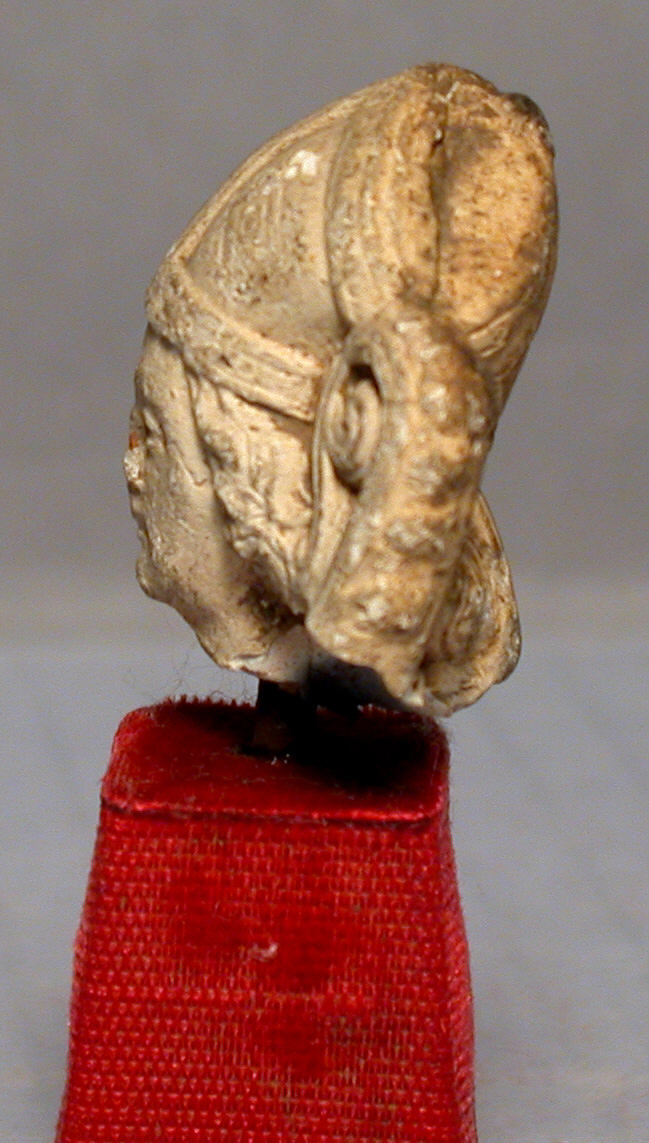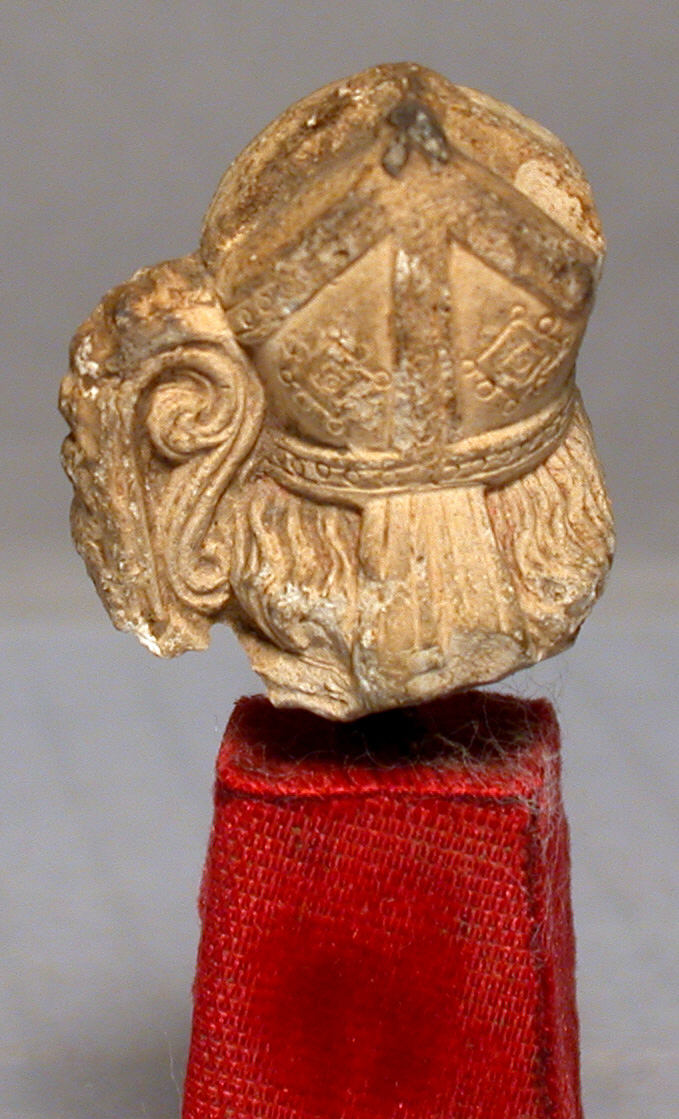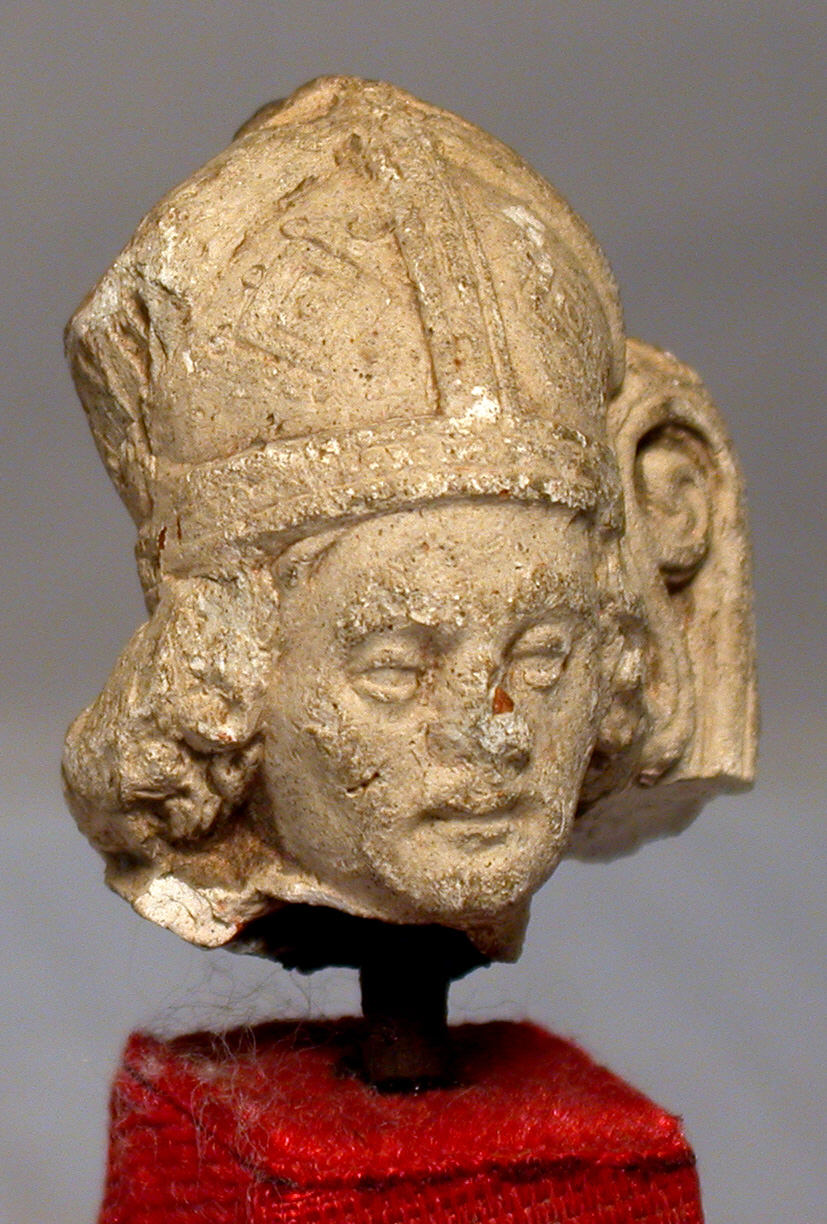Head of a Bishop with Crozier
Not on view
This miniature limestone head, carved fully in the round, has broken off at the neck. While the front of the head bears light surface abrasion, the original crispness of the carving is still evident on the back of the head. A round-faced, youthful figure of authority, the bishop wears a lightly pointed head covering known as a miter, indicating his status in the church. The curved top of a crozier, the typical attribute of bishop, connects to the proper left side of the head. Presenting a strong contrast to the majority of large, imposing representations of high-ranking clergy seen elsewhere in The Met’s medieval galleries, this little sculpture provides a completely different way of representing sanctity and ecclesiastic authority in the late medieval Church. While it could have attached originally to a free-standing statuette, perhaps serving as a representation of a bishop saint, and hence as a singular object of devotion, it could also have been part of a monumental carved tomb ensemble. Alternatively it could have been fully-carved component of a larger narrative relief sculpture. Either way, this diminutive carving embodies the medieval love of all things miniature, though limestone represents a departure from the materials more typical of the tiny in medieval art, which include boxwood, ivory, metalwork, and the illuminations of personal prayer books.
This image cannot be enlarged, viewed at full screen, or downloaded.
This artwork is meant to be viewed from right to left. Scroll left to view more.





